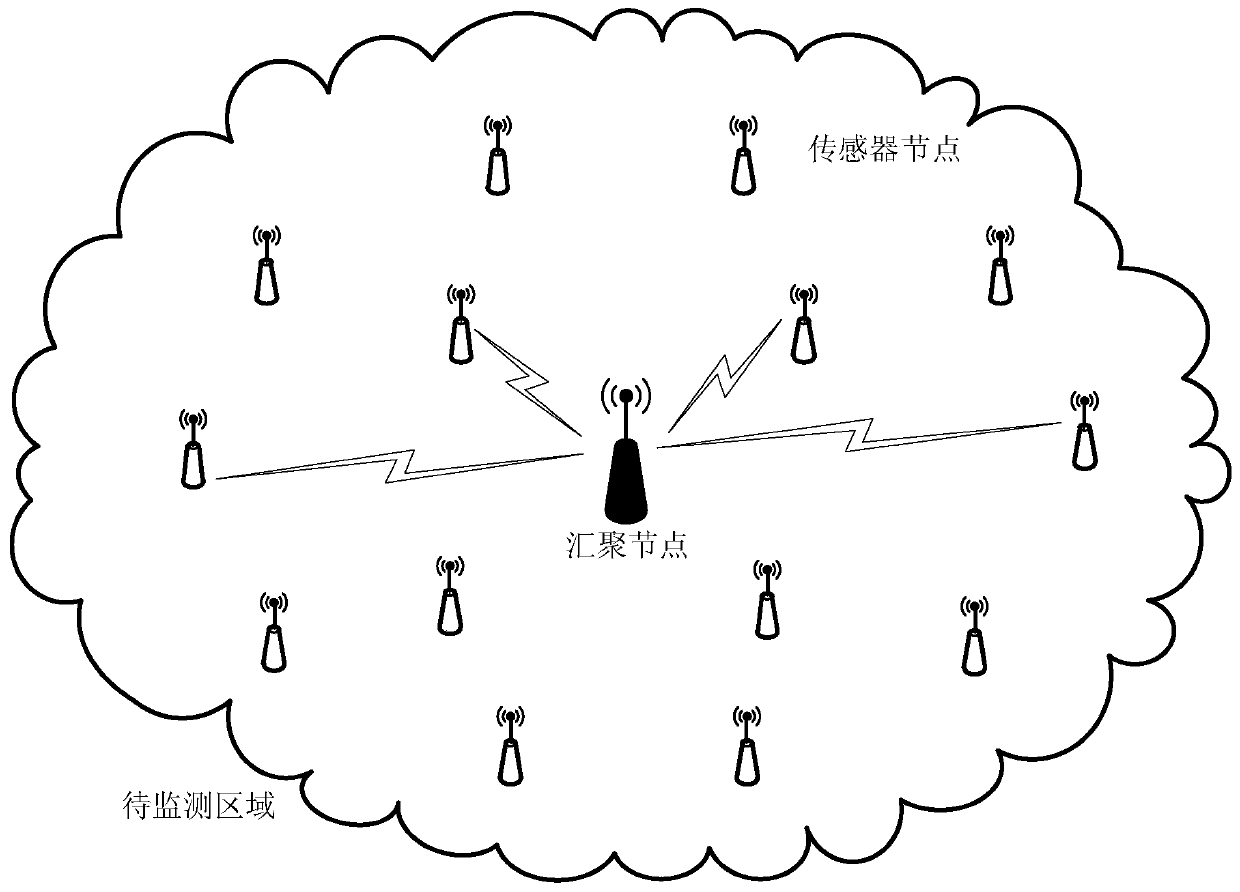Multi-domain cooperative multi-access method for star wireless sensor network
A wireless sensor and access method technology, applied in wireless communication, network topology, electrical components, etc., can solve the problems of wireless sensor network performance degradation, increase in packet loss rate and error rate, waste of communication resources, etc., to achieve increased The effects of large network coverage, reduced interference, and reduced power consumption
- Summary
- Abstract
- Description
- Claims
- Application Information
AI Technical Summary
Problems solved by technology
Method used
Image
Examples
Embodiment 1
[0052] The present invention proposes a multiple access method for multi-domain coordination of star-shaped wireless sensor networks, see figure 1 , including the following steps:
[0053] (1) In the star wireless sensor network, the sink node is placed at the center of the sensor nodes in the area to be monitored, so that the distance between it and each sensor node is within the coverage of the single-hop communication distance; among them, the single-hop communication distance It is a professional technical term in the field, which will not be described in detail in this embodiment of the present invention.
[0054] (2) With the convergence node as the center, the area to be monitored is divided into m sectors, and the sensor nodes in each sector are divided into one group, and the sensor nodes can be divided into m groups, m is an integer greater than or equal to 1, and m is based on The number of sensor nodes p, the sending time interval T, the air transmission time T of...
Embodiment 2
[0091] The present invention provides a multi-access method for multi-domain coordination of a star-shaped wireless sensor network, mainly taking indoor transmission of a LoRa wireless sensor network as an example, including the following steps:
[0092] (1) Firstly, according to the indoor transmission scenario of the LoRa wireless sensor network, the locations of the sink nodes and sensor nodes are determined;
[0093] see Figure 7 , the test scene is located in the laboratory building, the eight sensor nodes S1, S2, S3, S4, S5, S6, S7, and S8 are placed in the corridor respectively, and the sink node is placed in the laboratory in the middle to ensure that each sensor node is Within the single-hop communication distance of the sink node;
[0094] (2) In the embodiment, due to the limitations of the indoor scene and the number of sensor nodes, the sensor nodes are divided into two groups, S1-S4 are grouped into one group, S5-S8 are grouped into one group, and the sink node...
Embodiment 3
[0109] In order to verify the performance of a multi-domain coordinated multiple access method for a star wireless sensor network proposed in the present invention, the embodiment is compared with the random multiple access technology. When the random multiple access technology is used, The frequency points of the eight sensor nodes S1, S2, S3, S4, S5, S6, S7, and S8 are all set to 433MHz, and the spreading factor is set to 7. During the experimental test, the number of sensor nodes under the two methods starts from 1 Gradually increase until 8 sensor nodes are connected to the network, the sensor nodes start to send data randomly, and the sending time interval is 150ms, record the data upload packet loss rate and packet error rate of the sensor nodes at the sink node, for the two access The performance of the method is compared;
[0110] see Figure 8 and Figure 9 , when the random multiple access method is used, as the number of sending nodes increases, the packet loss ra...
PUM
 Login to View More
Login to View More Abstract
Description
Claims
Application Information
 Login to View More
Login to View More - R&D
- Intellectual Property
- Life Sciences
- Materials
- Tech Scout
- Unparalleled Data Quality
- Higher Quality Content
- 60% Fewer Hallucinations
Browse by: Latest US Patents, China's latest patents, Technical Efficacy Thesaurus, Application Domain, Technology Topic, Popular Technical Reports.
© 2025 PatSnap. All rights reserved.Legal|Privacy policy|Modern Slavery Act Transparency Statement|Sitemap|About US| Contact US: help@patsnap.com



